Jun 20 2010
Florina Beach, Cocagne Island, Carmel
Maybe it’s the first day of summer
It’s the 20th of June. Maybe it’s the first day or Summer, of maybe it’s tomorrow. We don’t have a calendar here that tells us. But the day starts out overcast and then the sun comes out, humidity building. Just before we set out for a beach excursion, it starts to sprinkle, so we decide not to go anywhere, but to stay home at Florina Beach. It’s our beach. It deserves some attention.
It took me two times looking at this place to see the possibilities. The first time that I saw the sign “Florina Beach”, I thought it said “Florida Beach”. How silly, I thought, comparing this place to Florida. But Florina is the woman’s name who used to own this land. She’s in her 80s now and still lives somewhere nearby.
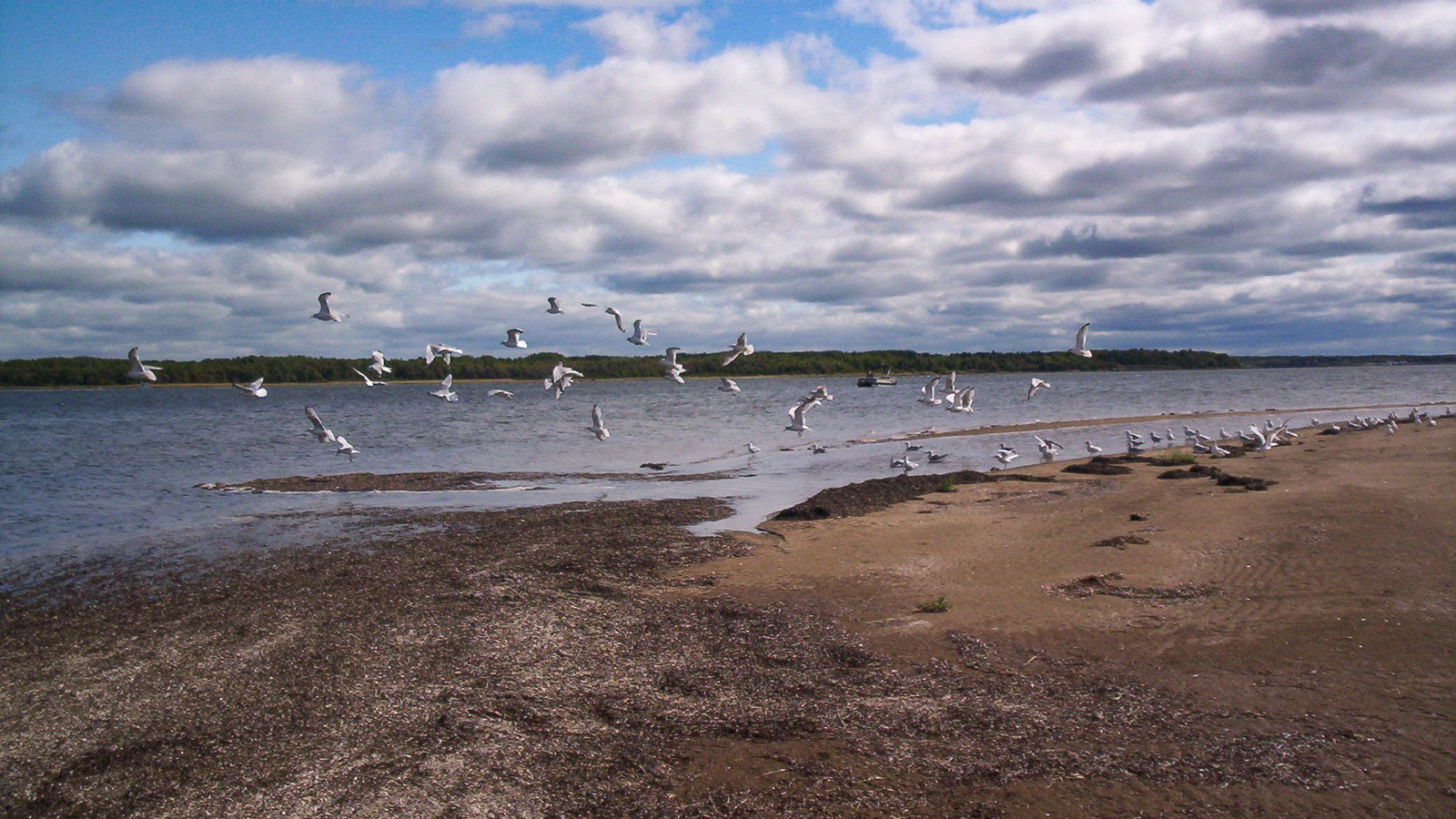
Our beach
The beach here is a small triangle. It’s much nicer and there’s much more of it when the tide is out. The water is shallow and warm and the sand is fine. Little fingerlings jump at the water’s edge and flash in the sunlight. There are tiny hermit crabs here that live in snail shells and there are lots of clams, too. Tiny oyster shells from the oyster farming cages are scattered on the beach. It seems like a gentle place where baby sea creatures are given a chance to grow and get a foothold on life — a place of gestation. After a storm the beach is often piled high with seaweed that looks like shredded packing paper.
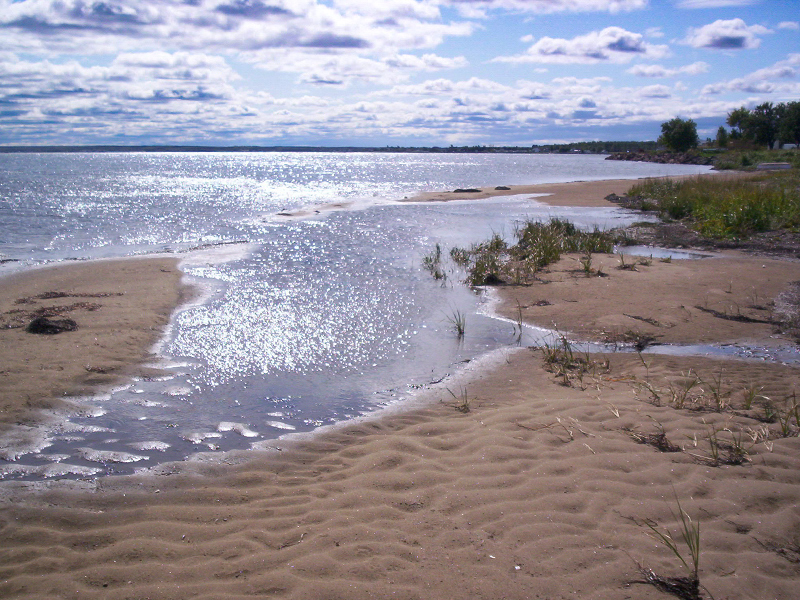
Is the island splitting in two?
From Florina Beach, looking across to Cocagne Island, we are noticing a curious thing. Until now, Cocagne Island has been two distinct forested clumps of land with a low, marshy neck connecting them. But this year we can see blue water and sailboats on the other side of the neck — like it’s thinned. Carved away by the action of the surf? Rising water levels? Eroded by the increasingly violent storm surges and changing currents?
Surette Island, nearby, didn’t used to be an island. My friend Jeanette told us that. She grew up here 70 years ago and at that time it was connected to the mainland. Could be that this whole coast is more dynamic than one would think. It’s taken us a while to notice.
So what if Cocagne Island is cut in two? Will we get bigger waves? A better beach? Or will the beach that we do have be washed away? Will the oyster fishery in these gentle waters be ruined?
At one time there was talk of “developing” Cocagne Island with high end homes, a golf course and a bridge. But the locals were against it. The island would be forever changed. So reports of vicious mosquitoes were circulated. Actually they are quite aggressive and bloodthirsty — so this was no lie.
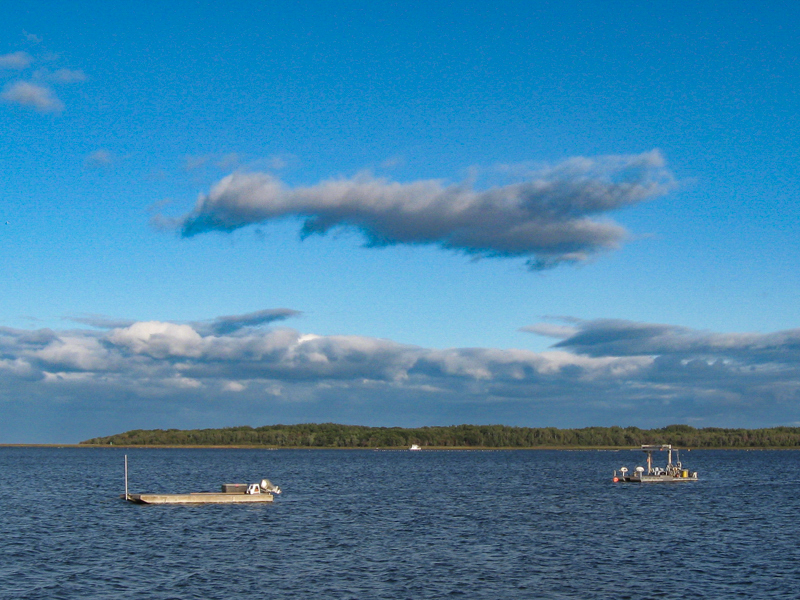
The island is a living thing
To me it’s important that the island stays wild with its oak forests where the herons nest and with great, untouched beaches on the ocean side. I even want to keep the mosquitoes. They’re food for the fish. They’re part of the abundance of life here. We need a repository of wilderness as a balance to all that is developed and changed by human activity.
But the island seems to be a thing alive. Alive and changing. Not only is it thinning in the middle, dividing like a cell, but the sand spit on the north side seems to be coming closer to the main shore. Left to its self-determination, and going at an island’s pace, it may yet willingly connect to the mainland.
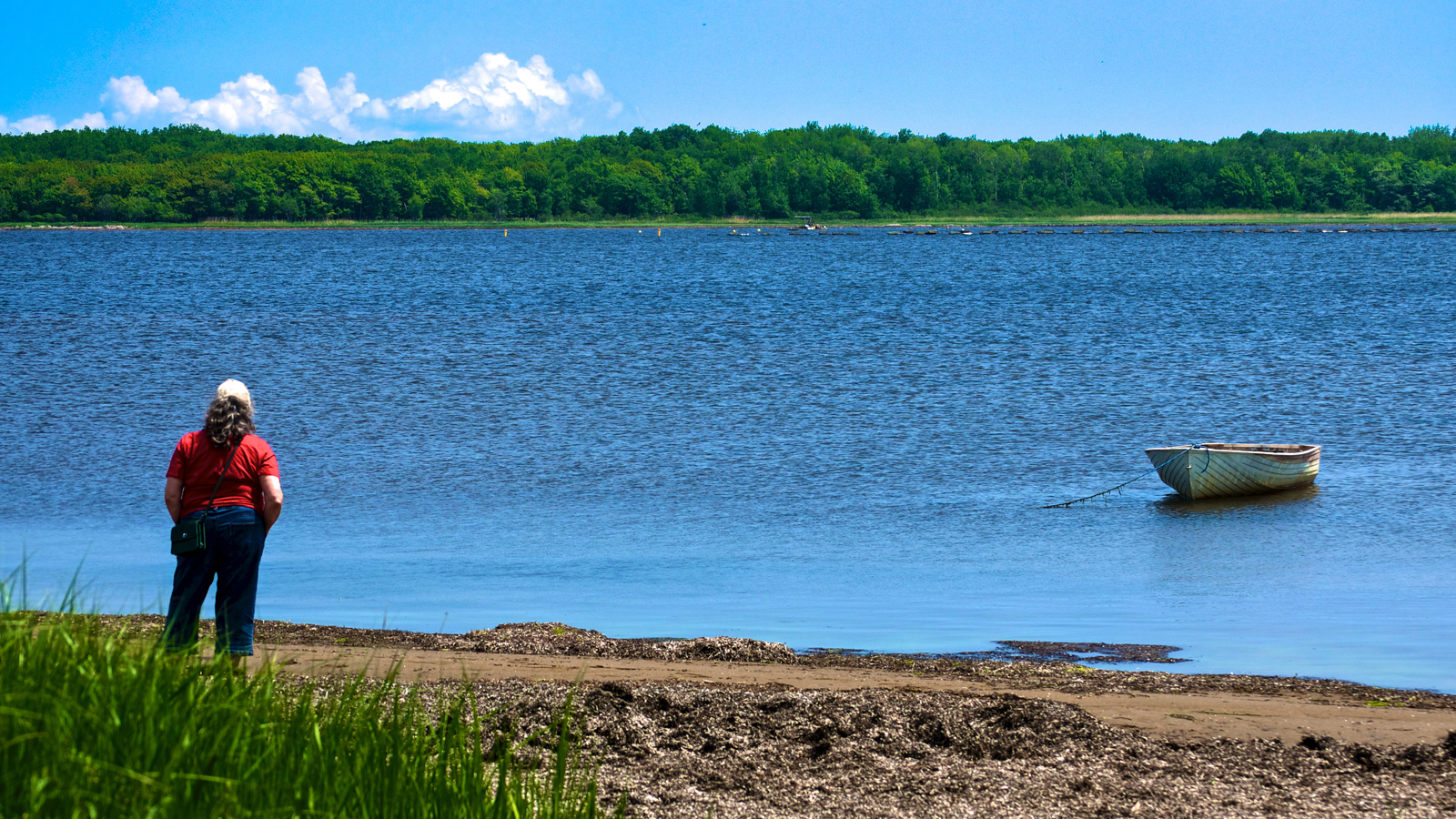
My friend Carmel died this week
My friend Carmel died this week at the too young age of 59. I was waiting for her to arrive in these parts for her summer residence any day now, as she does every year. Instead I got an email from her daughter, “Mom died today.”
Things seem like they will always be the same, until suddenly they are no longer the same at all, like an island cut in two. We often don’t notice the subtle changes, and the slow erosion until in one dramatic and startling moment everything is different.
Carmel, we spent time here together. You were a part of my life. You helped me give birth to my daughter. You were a good friend. Today I see that our lives, our souls, are built moment by moment, grain by grain. And all of the grains are moved by forces like the tides and the wind, pushed, gathered, eroded, divided, scattered and reconfigured. We can resist or ride the currents with grace, flow and generosity. We can welcome the reshaping. We can become something else. I think that you would understand. We can reach toward connection with another shore, familiar yet unknown.
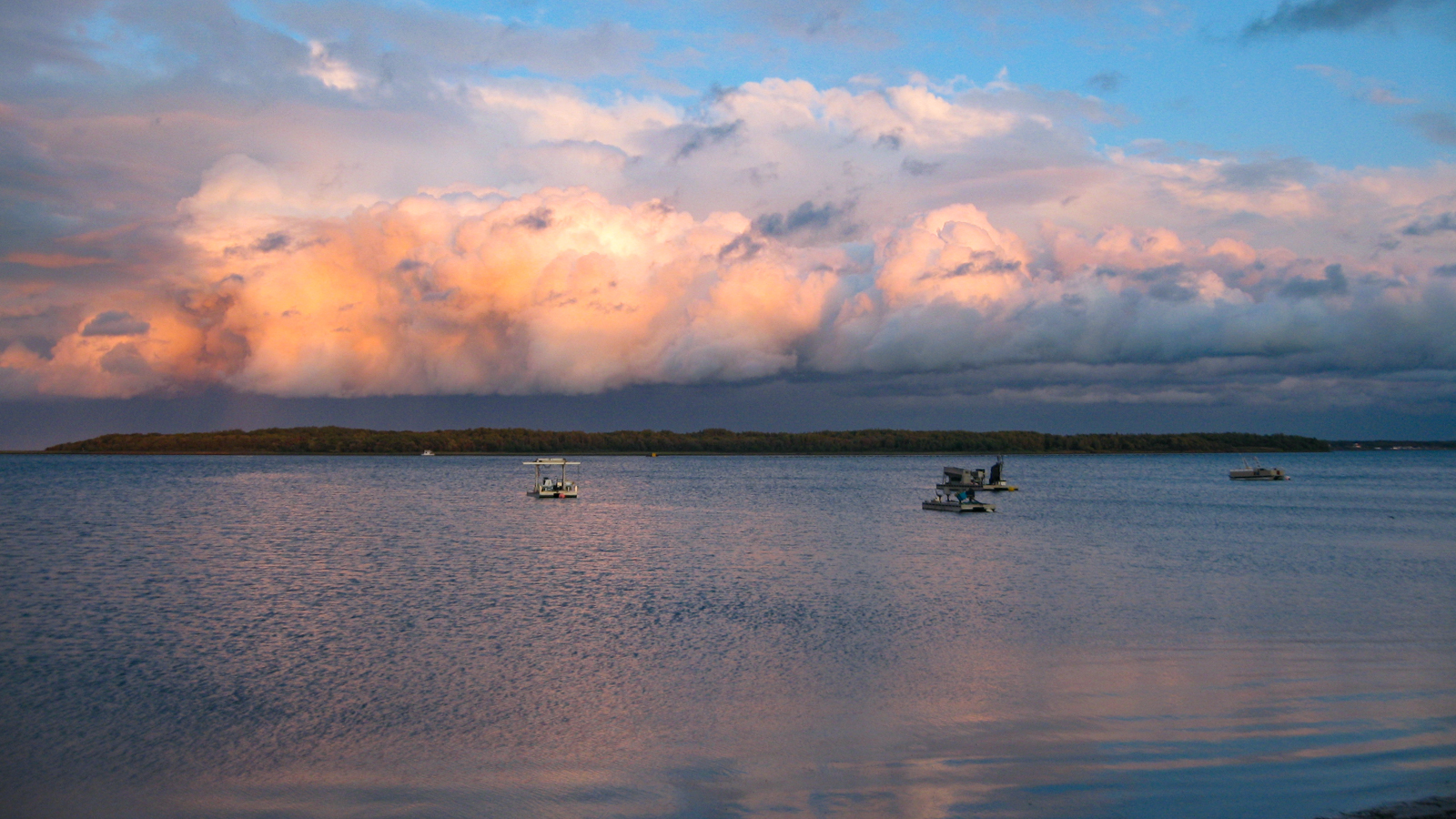
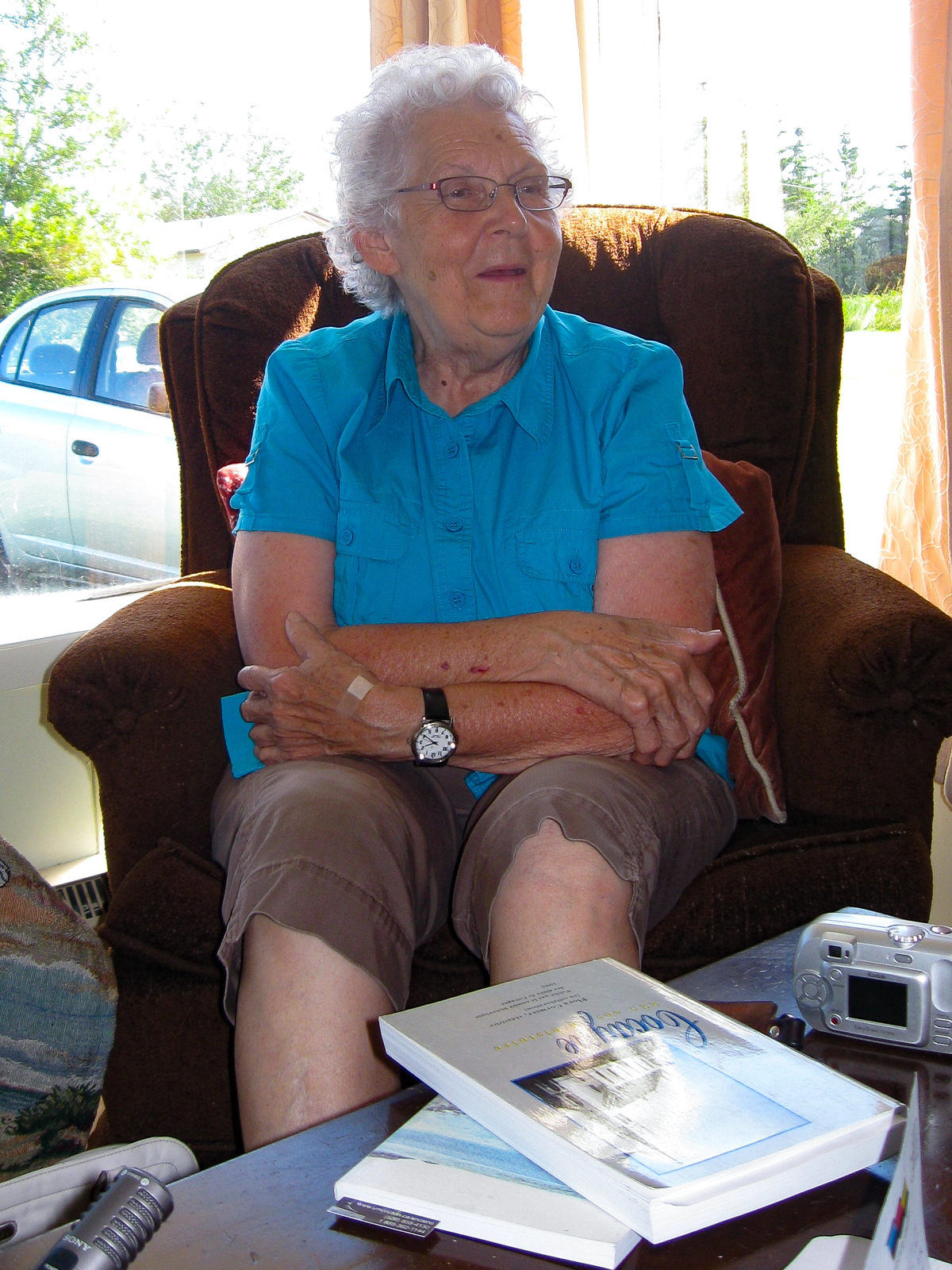
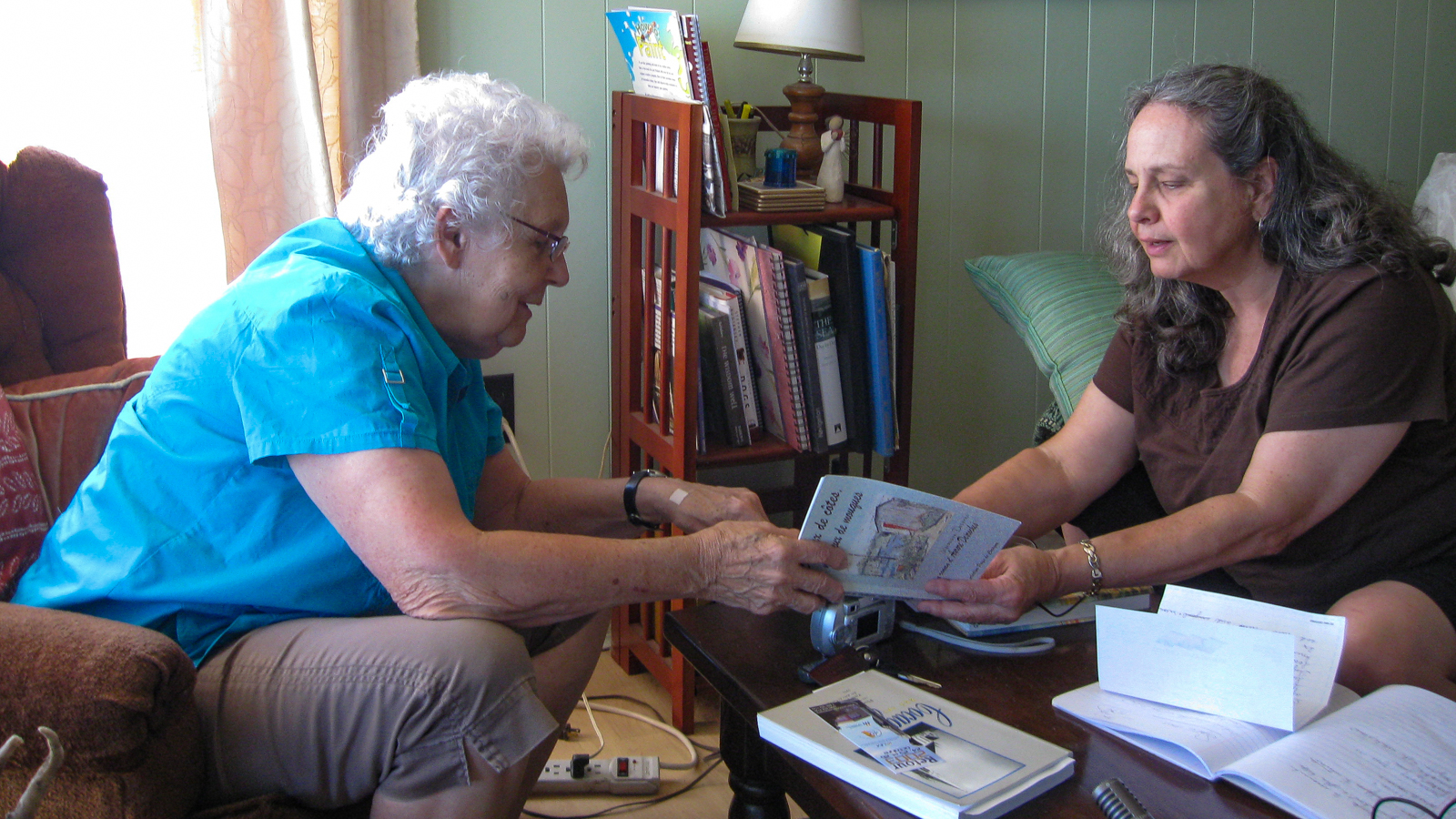
Aug 10 2010
Cocagne Island — A not so distant shore
We returned to the island last Sunday, Cocagne Island, that is, not Prince Edward Island. This time after rowing the 1.5 or so kilometres across from where our cottage is, we were not chased off by a hoard of mosquitoes because a breeze had come up on the trip across. That breeze, however, grew stiffer and, along with some nasty looking clouds, worried us before the crossing was over and even more on the way back. But when we arrived we were happy to be there.
This was our second trip to the island with the little 14 foot car top Elaine bought from a neighbour so we didn’t consider ourselves seafarers yet; but once we had weaved our way through the maze of oyster cages and landed, we were proud of ourselves as we walked along that distant shore.
We followed the shore for about a kilometre until we got to the marsh at the southeast tip. We might have gone further after a break, but the calm, sunny day we had when we got up that morning had turned grey and windy quicker than you can say “you’re such a landlubber” or “next time check the marine weather forecast.” We were blissfully happy for a while, though.
Islands Are Just Different
Despite the island being in our front porch view for almost ten years, the shore felt strange like only an island can. Everything was vivid — the rocks, the sand, the driftwood, the flotsam washed ashore. We saw deer tracks. And all the time we were aware that we could not just walk home, that there was a large body of water between us and the mainland. But it was beautiful.
Our first reconnaissance
On this first reconnaissance along the shore we saw many wonderful places one could camp. There were many small clearings in the birch and oak woods up on ledges eight feet above the sand. But hoping to cut across country on some future trip we were discouraged to see just how much underbrush there was; maybe there are more accessible patches elsewhere, we thought. The aerial photos from Google Maps didn’t have the resolution to answer that question definitively, but it didn’t look encouraging.
What we do know is that the island is, sadly, not remote. There were empty coffee cups, spent fireworks tubes, the odd lost shoe and other evidence of a nearby civilization that doesn’t value wild spaces as it should. Nevertheless we were happy with the little corner that we had discovered and explored and were already making plans for exploring the whole island.
When we shoved off we were none too glad to be on our way, the weather being what it was; but at the same time we were left wanting more. Perhaps there are other islands we can find and explore, we thought, once we were safely back on our front porch. We might need something bigger and steadier than an aluminum car top boat and a pair of oars, but other islands we’d seen in our travels seemed to be much closer now that we’d had one voyage to our credit. We were explorers now, true adventurers.
By Archie • Cocagne, Cocagne Island, First Page, Florina Beach Cottage, New Brunswick